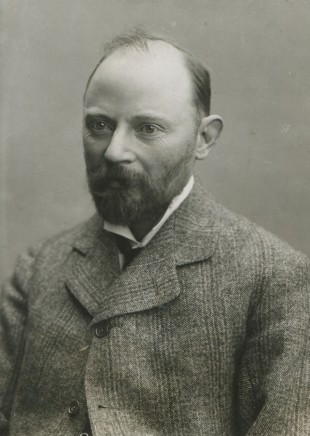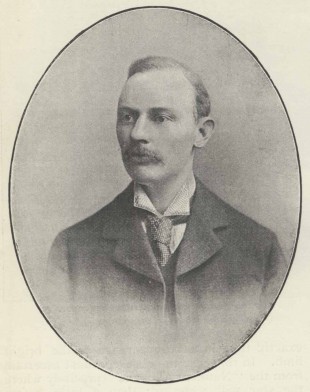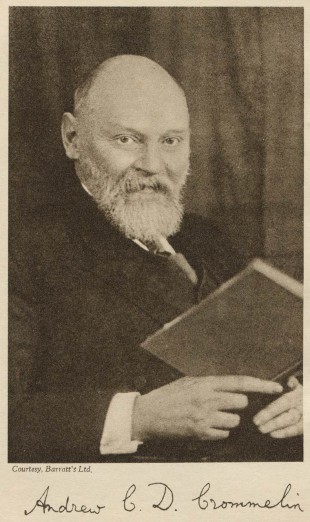…where east meets west
- Home
- Brief History
- The Greenwich Meridian
- Greenwich
(1675–1958) - Herstmonceux
(1948–1990) - Cambridge
(1990–1998) - Outstations (1822–1971)…
- – Chingford (1822–1924)
- – Deal
(1864–1927) - – Abinger
(1923–1957) - – Bristol & Bradford on Avon
(1939–1948) - – Bath
(1939–1949) - – Hartland
(1955–1967) - – Cape of Good Hope
(1959–1971)
- Administration…
- – Funding
- – Governance
- – Inventories
- – Pay
- – Regulations
- – Royal Warrants
- Contemporary Accounts
- People
- Publications
- Science
- Technology
- Telescopes
- Chronometers
- Clocks & Time
- Board of Longitude
- Libraries & Archives
- Visit
- Search
People: Andrew Crommelin
| Name | Crommelin, Andrew Claude de la Cherois | ||
| Place of work | Greenwich | ||
| Employment dates |
11 May 1891 – 11 May 1927 |
||
| Posts | 1891, May 11 |
Second Class Assistant | |
| 1896 |
Established Computer (see below) |
||
| 1904, Jan 1 | Assistant | ||
| Born | 1865, Feb 6 |
||
| Died | 1939, Sep 20 | (after being struck by a motor bike) | |
| Family Links | Daughter employed as a Computer from 1921–1924 | ||
| Objects named after him | Comet 27P/Crommelin; Crommelin crater (Moon); Crommelin crater (Mars); Asteroid 1899 Crommelin |
||
| Known Addresses | 1893–1894 | Clifton Villa (10) Ulundi Road | |
| 1895–1898 | 7 Vanburgh Park Road* | ||
| 1899–1939 | Benvenue, 55 Ulundi Road* | ||
*7 Vanburgh Park Road had previously been occupied by his father. 49–55 (odds) Ulundi Road were built in 1898–99 by F.J. Gorham, who also built 1–9 (odds), 19–21 (odds) & 32–34 (evens).

Probably taken around 1915, this image was released to the press around the time of Crommelin's retirement in 1927. Photograph by Elliott & Fry
1873 Arthur Matthew Weld Downing
1873 Edward Walter Maunder
1875 William Grasett Thackeray
1881 Thomas Lewis
1881 Henry Park Hollis
1891 Andrew Claude de la Cherois
Crommelin
1892 Walter William Bryant
1892 Thomas Charlton Hudson
Of the eight, six including Crommelin remained at the Observatory for their entire working life. Crommelin, was appointed as a Second Class Assistant following the creation of an additional post at this level. Following a regrading exercise in 1896 and the abolition of the post of First and Second Class Assistants, and their replacement with the Assistant and Established Computer grades, Crommelin was technically regraded as an Established Computer as was Bryant. In practice, both continued to be referred to by Christie as Second Class Assistants, except in the Navy Estimates. Both Crommelin and Bryant were promoted to the Assistant Grade in January 1904, Crommelin to a new post that had been created at this level, and Bryant as a result of the retirement of Nash.
Following his arrival at Greenwich, Crommelin became an observer with the Transit Circle, Airy’s Altazimuth and the Sheepshanks Equatorial. He was soon put in charge of the Altazimuth and the Sheephshanks, taking on responsibility for Christie’s Altazimuth which was erected in 1896. Following the premature death of Thackeray in 1919, Crommelin also took on responsibility for the Transit Circle. Most famous for his work on the orbit of Halley's Comet, which he carried out with the Chief Assistant Philip Cowell, Crommelin was also notable as an observer or solar eclipses, having been on expeditions in 1896, 1900, 1905 and 1919. It is worth noting here the huge pay difference and difference in seniority that existed between Cowell (a senior wrangler – ie the best in his year at Cambridge) and Crommelin who (as noted above) was 27th wrangler. Crommelin’s starting salary at the age of 25 in 1891 was £200 rising at the rate of £10 a year. Cowell on the other hand came to the Observatory as Chief Assistant in 1896, also at the age of 25, but on a starting salary of £500 rising at the rate of £20 a year up to a maximum of £600.
In his retirement, Crommelin was elected president of the Royal Astronomcial Society, serving two years in this capacity on the Board of Visitors at Greenwich from 1929–31. For much of his life, Crommelin lived in Ulundi Road, a short stroll from the eastern boundary of Greenwich Park. He first moved into the road in 1893 when he moved in next door to Lewis. Crommelin lived in Clifton Villa (10) , Lewis in Herbert Villa (8), a pair of identical detached houses built in 1883/84 by Richard Howell. Ulundi Road was popular with the Second Class Assistants, with Maunder also living in the road at that time and Hollis a previous occupant. His sister was the wife of the poet laureate John Maesfield.
Obituaries
By Charles Davidson. Monthly Notices of the Royal Astronomical Society, Vol. 100, p.234–6 (1940)
By Philibert Melotte. The Observatory, Vol. 63, p. 11–13 (1940)
Other reading
Investigation of the Motion of Halley's Comet From 1759 to 1910. Cowell, P. H. & Crommelin, A. C. D.
© 2014 – 2026 Graham Dolan
Except where indicated, all text and images are the copyright of Graham Dolan

